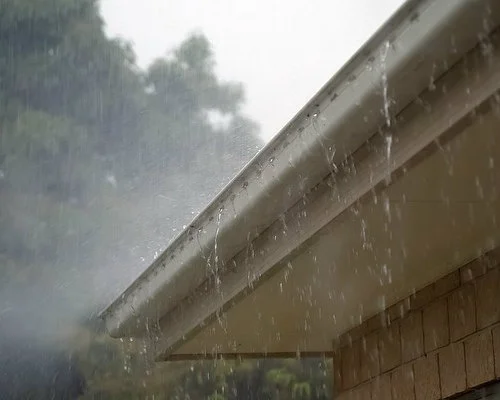Have you checked your gutters lately? Chances are it’s been a while. Don’t beat yourself up, it’s an area that most homeowners tend to overlook or flat out ignore.
If done correctly, and regularly, gutter maintenance is one of the easiest and most cost-effective ways to prevent costly water damage.
Regardless of what condition your gutters are in, here are some of the top causes of water damage and what you can do to prevent it.
Top Five Causes of Water Damage and Why Gutters Matter
1. Leaks and Holes
Even the tiniest of leaks can lead to massive water damage for your home. Try a simple tube of gutter sealant (about $5) for smaller holes and leaks.
In addition, large gaps may require metal patching — luckily most hardware stores offer gutter “patching kits.” Give extra attention to basements and bathrooms when looking for problem areas.
2. Misaligned Pitches
In order for water to flow properly from your gutters, they must be pitched properly. The general rule of thumb is ¼ inch of sloping per every 10 feet.
Not sure if they’re sloped correctly? The easiest way to tell is to check for standing water after some rainfall.
Correcting the pitching can be a big project, potentially requiring you to remove and reattach parts of the gutter. So it may be best to call in an expert to make sure the job is done to perfection and save you from future issues.
3. Clogs
This is the most common cause of water damage.
And it can arise from many problems—twigs, leaves, critters, debris after rain can all get stuck in your gutters and drains. Leave it unanswered for too long and you’ll get sagging gutters, or worse, completely broken ones.
Aim to clean them out once or twice a year, maybe even more if your home is surrounded by trees. Also, take caution after big storms and check your gutters for debris. If you find that clogged gutters is a chronic problem, consider fitting them for mesh screens, grates or porous foam.
4. Sagging
This is potentially a side effect of clogged gutters or simply the passage of time. But whatever the case may be, they can be dangerous.
You will end up with deterioration of the fasteners or hangers, or the fasteners will spread too far apart, and thus be unable to support the weight of the gutter.
Can’t tell if they’re sagging? It’s easy to tell—they should be completely straight, except for exceptionally long gutters, which may have a peak in the middle to encourage water flow.
Notice problems? It’s an easy fix: new fasteners and hangers are easily accessible at most hardware stores for just a few dollars.
5. Downspout Drainage
If your downspout is too close to your home, water will leak straight into your foundation and basement.
Additionally, downspouts can suffer blockage easily; relieve the burden by disconnecting your downspout and seeing if it ejects water a few feet from your home to a sloping surface.
Ideally, downspouts should extend 4-5 feet from your home, and you can purchase them for roughly $20 each.
Don’t get stuck in a water rut! Take some preventative measures to avoid the costly repairs of water damage and protect your home from this silent enemy. Checking and cleaning out your gutters regularly will save you time and money down the road.
We Can Help!
We cover gutter and drainage inspections for homeowners, buyers AND sellers. So schedule an inspection today or get a quick quote!

